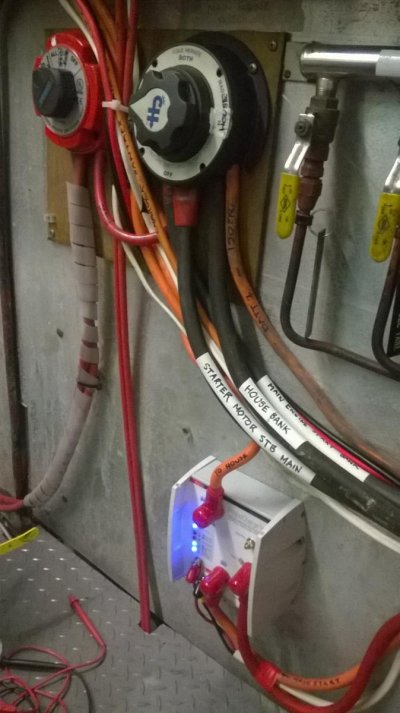Bohans
Veteran Member
Hi Everyone
Was hoping for help and clarification on wiring the IsoProCharge unit into my boat.
I am looking for the simplest set up possible.
What I have is this...
2 x Main Engines (Cummins NT855)
1x 12 v 160amp alt. connected to Stb motor (port motor has 24v alt to charge a completely separate inverter bank which is not part of this equation)
1 x Engine start bank of two 8D batts. 12v
1 x House Bank of 800amps 12v.
2 x Gensets with alts both 12v.
What I want to do is this...
1. Wire the Engine start bank to start both the main engines and the gensets. I would do this via two separate battery switches, 1-2-both.
2. Use the House Bank to emergency combine with the Engine Bank via the switches mentioned above.
3. Charge the Engine Bank and House Bank with the IsoProCharge.
4. Run the Genset Alts directly back to the Genset starter to go back to the Engine Start Banks.
I have two separate 12v main electricity chargers to charge the house and engine banks separately.
Can anyone mock up a diagram for this arrangement please...I have put a rough diagram together but am a little confused where to join the Negative cables either to each engine and link together or keep separate.
Thanks for any assistance.
Bo
Was hoping for help and clarification on wiring the IsoProCharge unit into my boat.
I am looking for the simplest set up possible.
What I have is this...
2 x Main Engines (Cummins NT855)
1x 12 v 160amp alt. connected to Stb motor (port motor has 24v alt to charge a completely separate inverter bank which is not part of this equation)
1 x Engine start bank of two 8D batts. 12v
1 x House Bank of 800amps 12v.
2 x Gensets with alts both 12v.
What I want to do is this...
1. Wire the Engine start bank to start both the main engines and the gensets. I would do this via two separate battery switches, 1-2-both.
2. Use the House Bank to emergency combine with the Engine Bank via the switches mentioned above.
3. Charge the Engine Bank and House Bank with the IsoProCharge.
4. Run the Genset Alts directly back to the Genset starter to go back to the Engine Start Banks.
I have two separate 12v main electricity chargers to charge the house and engine banks separately.
Can anyone mock up a diagram for this arrangement please...I have put a rough diagram together but am a little confused where to join the Negative cables either to each engine and link together or keep separate.
Thanks for any assistance.
Bo


